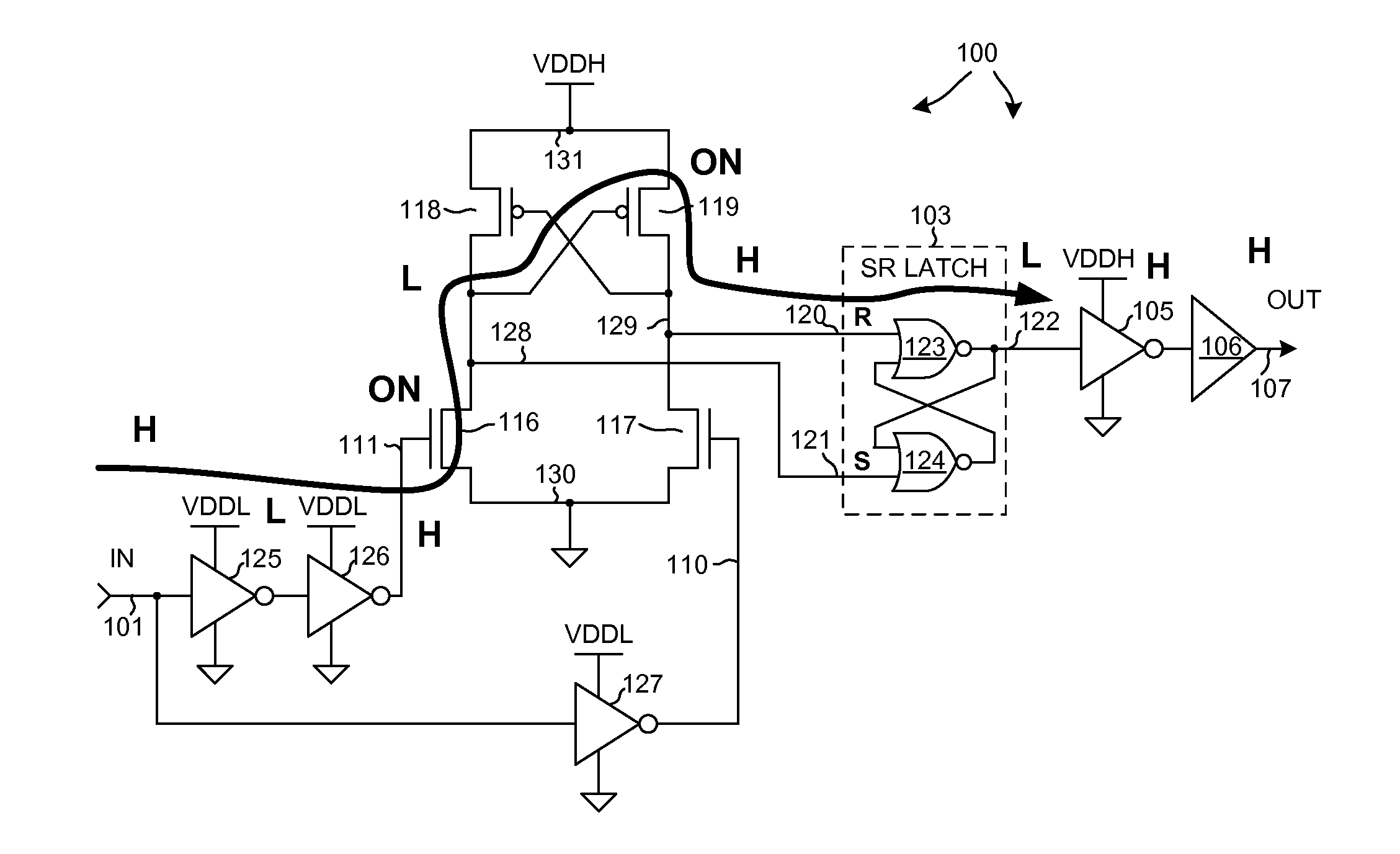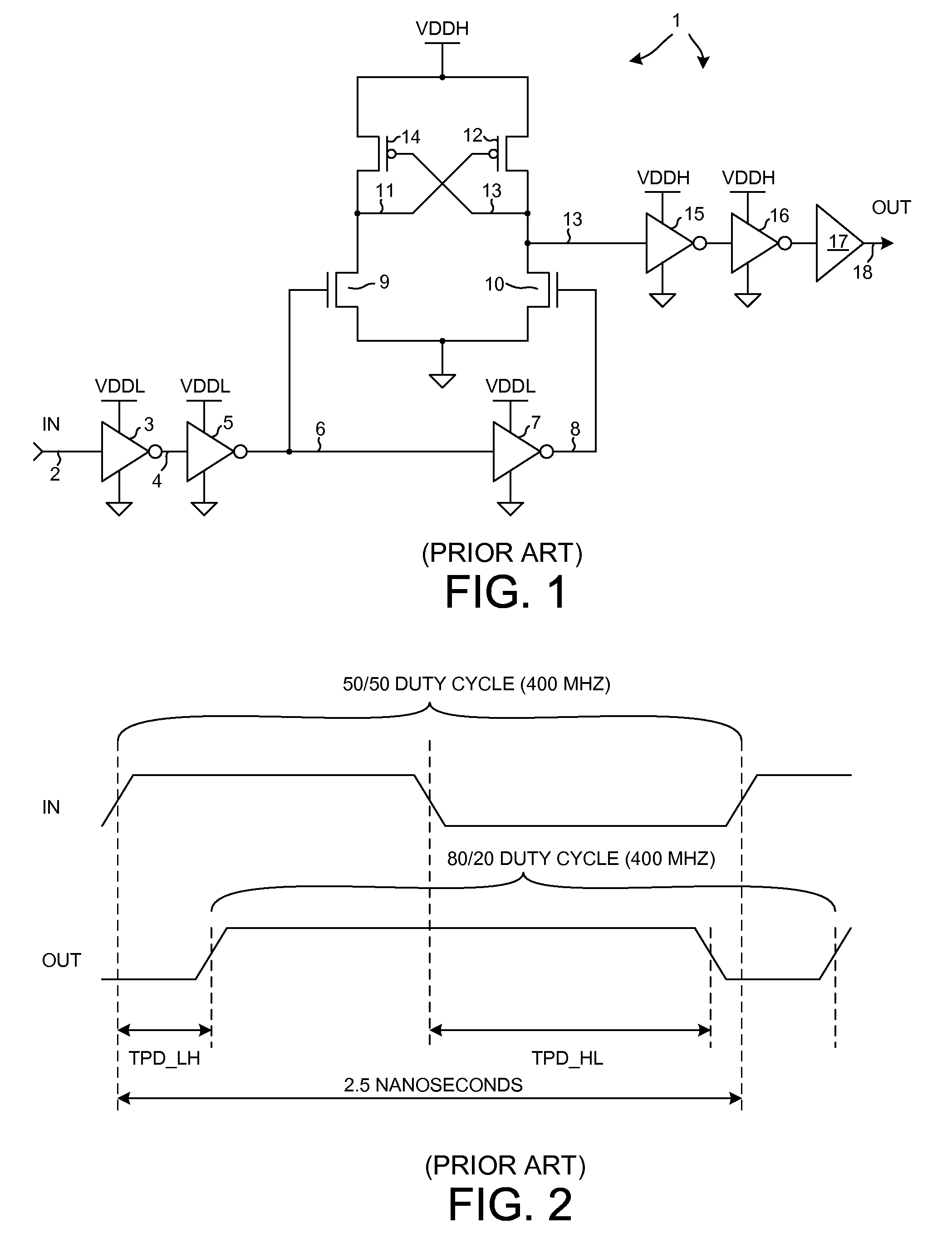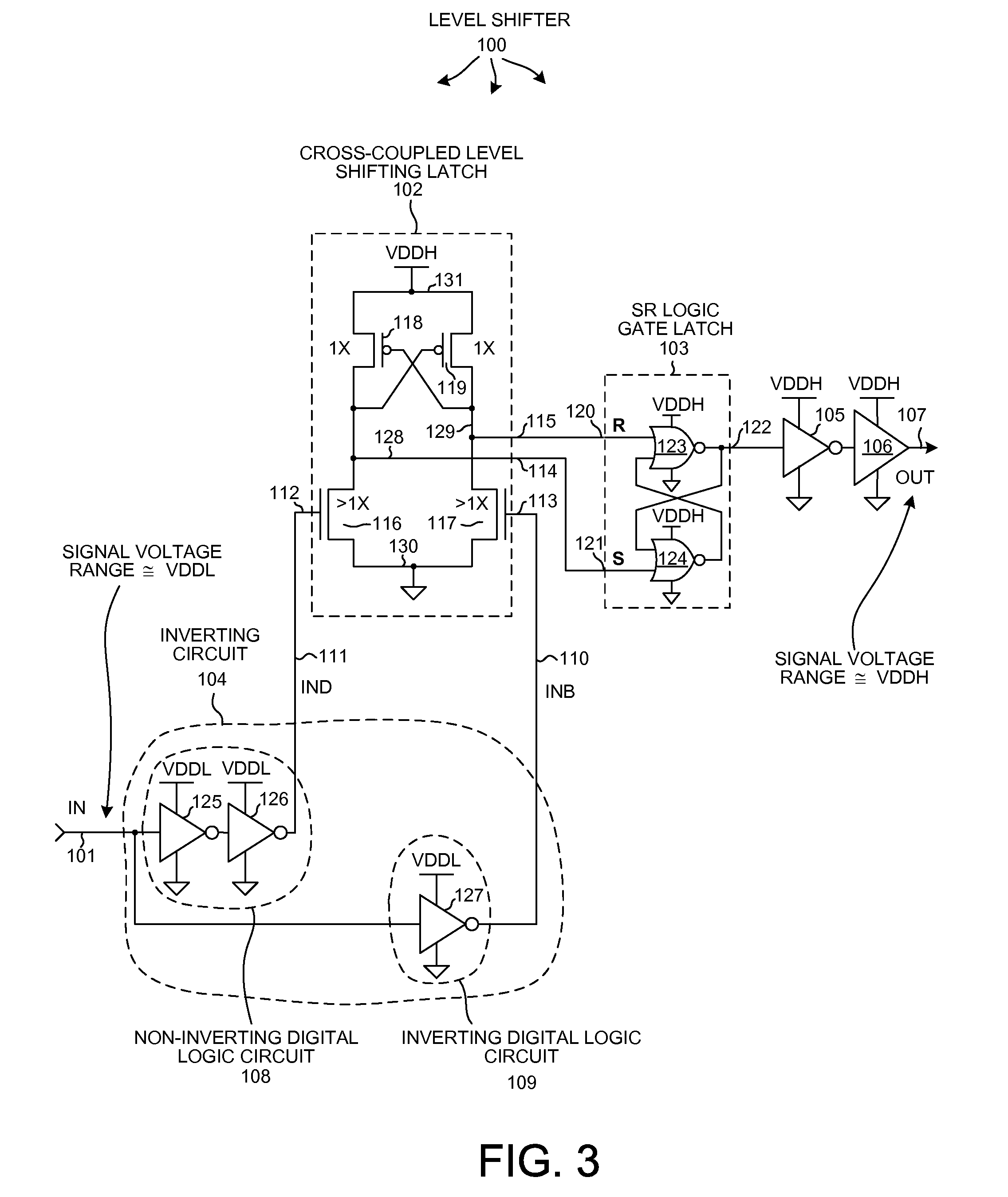Level shifter having low duty cycle distortion
a level shifter and duty cycle distortion technology, applied in logic circuits, pulse automatic control, pulse techniques, etc., can solve the problem of introducing an undesirable amount of duty cycle distortion into the signal, the duty cycle distortion of the circuit of fig. 1 can be greater than, and the low-to-high and high-to-low propagation delay times differ from one another, so as to achieve the effect of low duty cycle distortion and increase the supply voltage margin of the level shifter circui
- Summary
- Abstract
- Description
- Claims
- Application Information
AI Technical Summary
Benefits of technology
Problems solved by technology
Method used
Image
Examples
Embodiment Construction
[0024]FIG. 3 is a simplified diagram of a level shifting circuit 100 in accordance with one novel aspect. Level shifting circuit 100 includes an input node 101, a cross-coupled level shifting latch 102, a set-reset (SR) logic gate latch 103, an inverting circuit 104, an inverter 105, a buffer 106, and an output node 107. A digital input signal IN is received onto input node 101 and is level shifted and output as a digital output signal OUT onto output node 107. Digital input signal IN transitions within a first signal voltage range (for example, from ground potential to a VDDL voltage of approximately 1.2 volts). Digital output signal OUT transitions within a second signal voltage range (for example, from the ground potential to a VDDH voltage of approximately 1.8 volts). Level shifting circuit 100 is realized in complementary logic involving P-channel and N-channel field effect transistors.
[0025]Inverting circuit 104 includes a non-inverting digital logic circuit 108 and an inverti...
PUM
 Login to View More
Login to View More Abstract
Description
Claims
Application Information
 Login to View More
Login to View More - R&D
- Intellectual Property
- Life Sciences
- Materials
- Tech Scout
- Unparalleled Data Quality
- Higher Quality Content
- 60% Fewer Hallucinations
Browse by: Latest US Patents, China's latest patents, Technical Efficacy Thesaurus, Application Domain, Technology Topic, Popular Technical Reports.
© 2025 PatSnap. All rights reserved.Legal|Privacy policy|Modern Slavery Act Transparency Statement|Sitemap|About US| Contact US: help@patsnap.com



